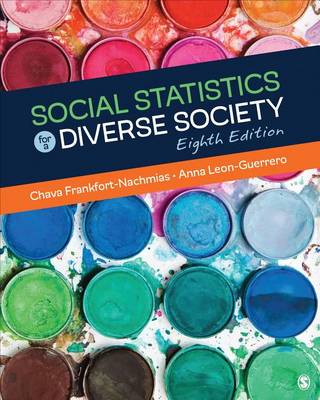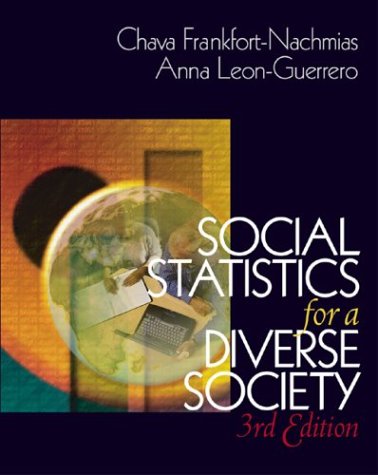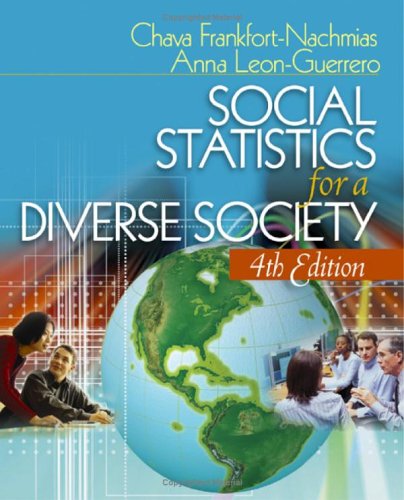Undergraduate Research Methods and Statistics
3 total works
Social Statistics for a Diverse Society
by Chava Frankfort-Nachmias and Anna Y. Leon-Guerrero
Published 1 January 1997
The Second Edition of this popular statistics text shows students how substance and technique are related in social research issues.
This revised edition includes: clear and more concise presentation of topics; revisions to the Testing Hypotheses chapters; real-world examples and exercises; hints on using SPSS version 9; and an accompanying disk with datasets from the US General Social Survey.
Social Statistics for a Diverse Society with SPSS Student Version 11.0
by Dr Chava Frankfort-Nachmias and Anna Y. Leon-Guerrero
Published 18 April 2002
This groundbreaking textbook uses real-world research examples and data to provide a revealing introduction to social science statistics. The Third Edition of this widely adopted text effectively links social issues and sociological concepts with statistical techniques. Realizing that students may lack a substantial math background, or suffer from "math anxiety, " the material in this book is presented using straight-forward prose that emphasizes intuition, logic, and common sense rather than rote memorization. Throughout the text instructors are provided with resources to support effective teaching: illustrations showing how statistical concepts are used to interpret social issues, guides for reading and interpreting the research literature, SPSS demonstrations, and a rich variety of exercises. The user-friendly, informal style of this innovative text has been widely applauded by students and instructors alike.
Social Statistics for a Diverse Society With SPSS Student Version
by Chava Frankfort-Nachmias and Anna Y. Leon-Guerrero
Published 21 September 2005
Written especially for undergraduate students taking their first course in social statistics, this highly accessible bestselling text has been thoroughly revised and updated with the latest General Social Survey data. The new Fourth Edition maintains the same informal, conversational writing style along with the many pedagogical features have led to the previous editions' widespread success. It also introduces new social issues, including more analysis of cultural diversity. The text includes resources designed to support effective teaching: illustrations showing how statistical concepts are used to interpret social issues, guides for reading and interpreting the research literature, SPSS demonstrations, and a rich variety of exercises. The authors have introduced a strong global perspective by using real-life examples from the International Social Survey Programme that help expand the students' analytical focus beyond the United States.


